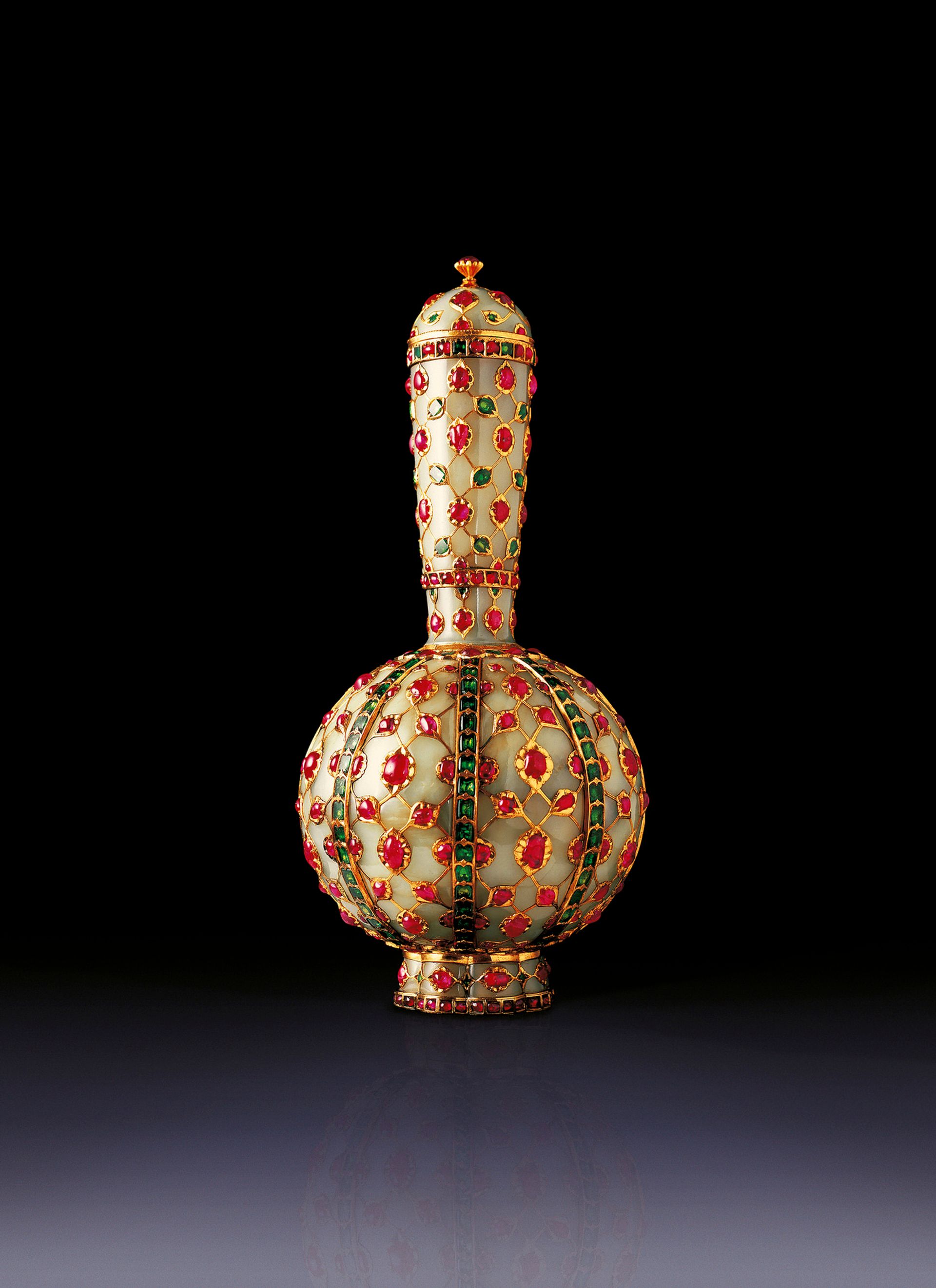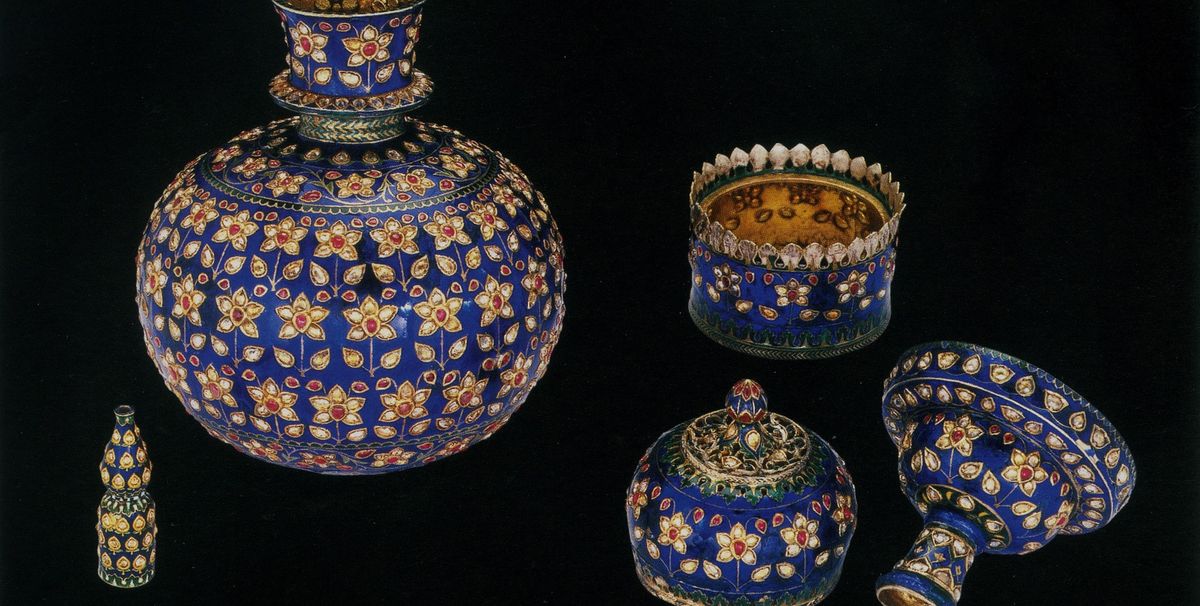Two Mughal treasures brought to Britain by Robert Clive, the commander-in-chief of British India, also known as Clive of India, have been export-deferred again—13 years after an earlier attempt to send them from the UK to Qatar.
When Clive of India’s descendants consigned a very rare jade and gold flask decorated with emeralds and rubies along with a ruby and sapphire huqqa pipe to Christie’s in 2004, both were bought by Sheikh Saud bin Mohammed Al-Thani, the culture minister of Qatar. After export licences were applied for, the Victoria and Albert Museum (V&A), which wanted the flask, and the National Trust, which wanted the huqqa, set out to raise money to match the prices. But the Qataris then withdrew the licence applications, blocking any purchase. This led to calls for a reform of export procedures to prevent foreign owners thwarting UK museums.

Sheikh Saud, a distant cousin of the ruling emir, was one of the most prolific art buyers in the early 2000s. However, it was often unclear whether his acquisitions were for himself or for the Qatari state, and he was put under house arrest for a short time in 2005. He died in London in 2014.
On 18 January 2017 the UK culture minister, Matt Hancock, announced that new export licences were being deferred on the two treasures, but the prices the UK institutions have to match have more than doubled since the first export application. The flask is now valued at £6m (£2,973,000 in 2004) and the huqqa at £240,000 (£98,000 in 2004). Both pieces were made for the Mughal court and were brought back by Clive of India after his victory in the Battle of Plassey in 1757. The flask dates from the early 17th century and the huqqa from the mid 18th century.
After the Qataris withdrew the export licence applications in 2005, they were required to keep the objects in the UK. The flask and huqqa were lent to the V&A’s 2009 Maharaja exhibition and are still on loan to the museum. Although the flask travelled with the exhibition when it toured to Munich, Toronto, San Francisco, Chicago and Richmond (Virginia), the huqqa is very fragile (its enamel is flaking off) and has remained at the museum.
Last year the V&A was told that the loan agreement for the two treasures would not be renewed. Qatar Museums wants to display them in Doha’s Museum of Islamic Art, which opened in 2008. The V&A and the National Trust are now considering whether to try to make matching offers, despite the increased prices. The initial deadlines run to 17 April for the huqqa and 17 May for the flask, although they could be extended. This time, the hope is that Qatar Museums will not simply withdraw the export applications if UK buyers step forward.


